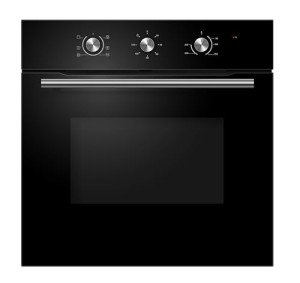There Is No Doubt That You Require Inbuilt Ovens
Understanding Inbuilt Ovens: The Perfect Kitchen Appliance for Modern Cooking
In the ever-evolving world of kitchen appliances, inbuilt ovens have become a preferred option for property owners and culinary lovers alike. These sophisticated appliances guarantee not only practical performance but also serve as an aesthetically pleasing addition to modern kitchens. This article explores the numerous aspects of inbuilt ovens, discussing their types, functions, benefits, and FAQs.
What is an Inbuilt Oven?
An inbuilt oven, likewise called a built-in oven, is a cooking home appliance that is created to be integrated into the kitchen cabinetry of a kitchen. Unlike freestanding ovens, inbuilt ovens are set into the wall or under the countertop, supplying a structured and contemporary look. This combination enables a more hassle-free cooking experience and much better kitchen organization.
Kinds Of Inbuilt Ovens
When selecting an inbuilt oven, a number of types deal with various cooking choices and requirements. The following are the most typical types:
Single Inbuilt Ovens:
- These are standalone systems providing one cooking chamber. They are ideal for smaller cooking areas or individuals who prepare less often.
Double Inbuilt Ovens:
- Featuring two independent cooking chambers, double ovens enable cooking numerous meals at different temperatures all at once, making them ideal for households or those who amuse frequently.
Compact Inbuilt Ovens:
- Smaller in size, compact ovens fit neatly into tighter spaces and can be integrated into kitchen islands or lower cabinets.
Steam Ovens:
- Using steam as a cooking approach, these ovens preserve the nutrients and moisture in food, providing healthier cooking options.
Convection Ovens:
- Equipped with a fan and exhaust system, stove circulate hot air for even cooking, making them effective for baking and roasting.
Wall Ovens:
- Wall ovens are specifically created to be built into a wall, conserving space while enhancing ease of access.
Microwave Ovens:
- While not generally classified as an oven, a built-in microwave can be integrated into the cabinets for fast cooking and reheating.
Table 1: Comparison of Inbuilt Oven Types
Oven Type
Cooking Chambers
Suitable Use
Advantages
Single Oven
1
Little homes
Space-efficient, easier to install
Double Oven
2
Large households or frequent cooks
Cook several dishes simultaneously, more flexible
Compact Oven
1
Little cooking areas
Conserves space, great for quick meals
Steam Oven
1
Health-conscious cooking
Maintains nutrients, perfect for vegetables and fish
Convection Oven
1
Baking and roasting
Even cooking, minimizes cooking time
Wall Oven
1
Space-saving style
Easy gain access to, modern-day aesthetic
Built-in Microwave
1
Quick heating and cooking
Practical, saves counter area
Key Features of Inbuilt Ovens
Inbuilt ovens come geared up with numerous functions that enhance the cooking experience. Below are some key features worth thinking about:
- Self-Cleaning Options: Many inbuilt ovens use self-cleaning cycles that make upkeep much simpler.
- Digital Controls: Precise temperature level settings and programmable cooking times enable greater cooking control.
- Smart Technology: Some designs use connection to smartphone apps for remote operation and monitoring.
- Numerous Cooking Modes: Various cooking modes, such as baking, broiling, and roasting, boost versatility.
- Safety Features: Included sensors and timers guarantee that the oven runs safely, preventing overcooking and overheating.
- Energy Efficiency: Inbuilt ovens typically take in less energy compared to their freestanding counterparts.
Advantages of Inbuilt Ovens
Inbuilt ovens bring a plethora of advantages to modern-day cooking areas:
Aesthetic Appeal:
- Their smooth design can flawlessly blend into kitchen cabinets, elevating the total look of the area.
Space-Saving:
- Built into walls or other furnishings, these ovens can release up floor area, making kitchen areas feel larger and more organized.
Organized Cooking Space:
- With installation choices, they can be placed at an ergonomic height, making it easier to keep an eye on cooking without flexing over.
Versatile Cooking Options:
- Many inbuilt ovens featured numerous cooking functions, giving home cooks the ability to explore various recipes.
Prospective for Increased Home Value:
- A properly designed kitchen with inbuilt appliances can considerably enhance the appeal and value of a home.
FAQs About Inbuilt Ovens
Q: Can I install an inbuilt oven myself?A: While some house owners might feel comfy carrying out the installation, it is normally suggested to employ an expert for exact fitting and electrical requirements.
Q: Do inbuilt ovens included warranties?A: Most makers provide service warranties varying from one to several years, depending upon the brand name and model. Always check the warranty conditions before acquiring.
Q: Are inbuilt ovens more pricey than freestanding ovens?A: Inbuilt ovens can be more pricey due to their style and setup requirements, but the price typically shows the added features and aesthetic appeal.
Q: What power supply do inbuilt ovens need?A: Most inbuilt ovens require a devoted electrical connection, often 230V – 240V. Consult the maker's specs for the precise requirements.
Q: How do I maintain an inbuilt oven?A: Regular cleansing, following the manufacturer's guidelines for self-cleaning choices, and periodic look for wear and tear can help keep the oven's condition.
Inbuilt ovens represent a perfect mix of functionality and design for the modern-day kitchen. With Ovens And Hobs and features available, these appliances not only boost the cooking experience however also contribute to a cleaner, more organized area. By understanding the alternatives readily available and their inherent benefits, homeowners can make educated choices to raise their culinary journeys. As kitchens continue to develop, buying a high-quality inbuilt oven can result in higher convenience, efficiency, and overall happiness in cooking.
